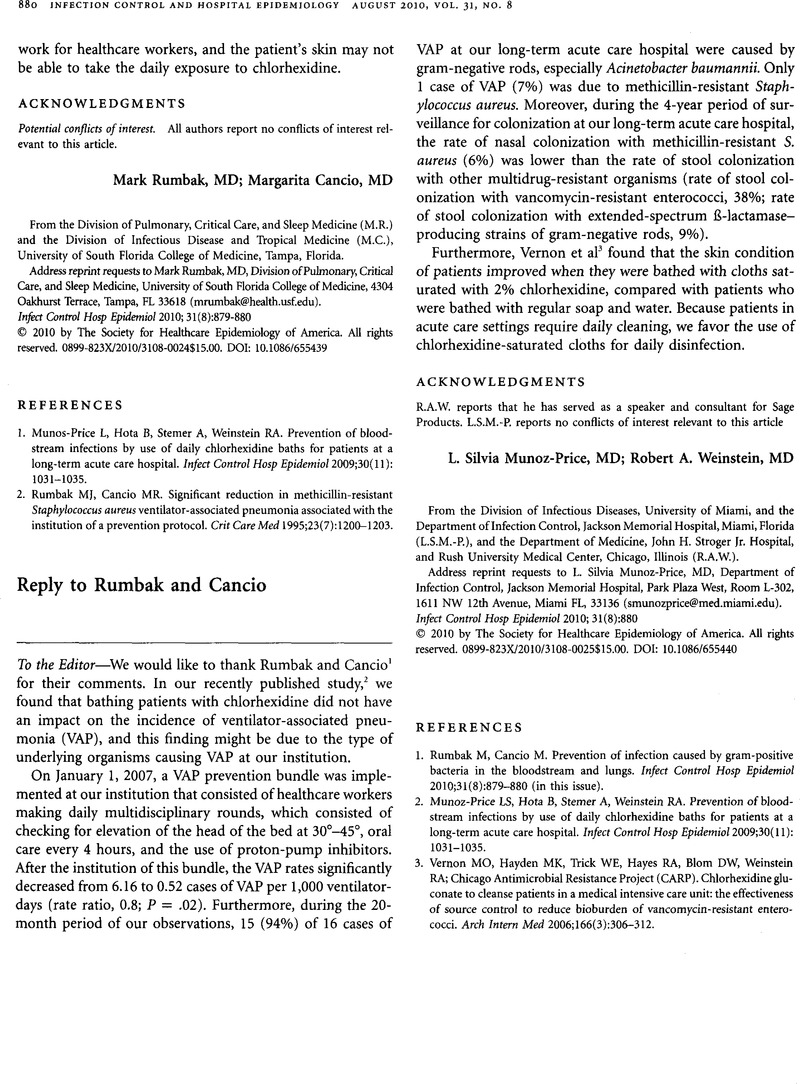3.Vernon, MO,
Hayden, MK,
Trick, WE,
Hayes, RA,
Blom, DW,
RA, Weinstein; Chicago Antimicrobial Resistance Project (CARP).
Chlorhexidine gluconate to cleanse patients in a medical intensive care unit: the effectiveness of source control to reduce bioburden of vancomycin-resistant enterococci.
Arch Intern Med 2006;
166(
3):
306–
312.
Google Scholar 